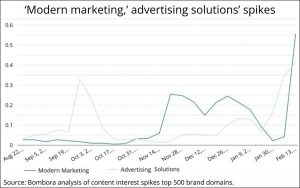
Search engine optimization, or SEO, has proved over the years to be an elusive and fluid pursuit. As Google and other search engines are constantly changing their algorithms, the industry often contains more mysteries than it does concrete answers. Things have changed almost entirely since the early days of SEO. However, regardless of how the industry has evolved over the years, one trend has stayed the same: algorithms are getting smarter and search engines are getting better at indexing content built for users.
SEO is still the number one go-to resource for webmasters looking to boost organic traffic. Yet, in all the calculation and analysis of keywords, H1 and H2 tags, algorithms, site load speed etc., it is easy to forget about the human beings behind all of this. The solution: learn how to improve on-page seo by optimizing for users and focusing above the fold.
Enter Google Hummingbird
Google has long been the industry leader in generating useful search engine results. The term “optimization” refers to how relevant search results are to the user’s original intent. So, with each Google algorithm introduction and upgrade, the browser makes yet another attempt to think more like one of its users and deliver the most satisfactory search engine results.
With Hummingbird, Google moves past the analytical and into the contextual aspects of how users search for content. In short, Google attempts to become “human” in order to deliver the best possible content to its users in the least amount of time.
Measures of “Good User Experience”
Regardless of whether your visitors are using a trusted ISP or the fastest VSAT satellite internet available, their overall satisfaction level with your website will still boil down to whether or not they get exactly what they want in the shortest amount of time.
Here are several measures of user experience you can use to test your own website and see how well you do.
1. Fast load time
Expecting a user to wait for a page to load is unrealistic at best. There are too many competitors that are happy to reward a user’s interest with the instant gratification of a quickly loading page. In a recent survey by TagMan, 3 out of 5 users reported that poor site performance makes them less likely to return to a site.
2. Placing the desired information “above the fold” In the world of web-based marketing, the term “above the fold” translates to mean above the scroll down line. If a user has to scroll down the page to find the information, there is a very real risk the user will leave rather than make the extra effort to keep scrolling. Peep Laja, a former keynote speaker at the popular digital marketing conference SearchLove, noted that, despite living in a more scroll-oriented world, content above the fold still grabs approximately 80% of our attention.
In the world of web-based marketing, the term “above the fold” translates to mean above the scroll down line. If a user has to scroll down the page to find the information, there is a very real risk the user will leave rather than make the extra effort to keep scrolling. Peep Laja, a former keynote speaker at the popular digital marketing conference SearchLove, noted that, despite living in a more scroll-oriented world, content above the fold still grabs approximately 80% of our attention.
3. Easy and responsive site navigation
If your user needs to access your website’s site map to find the desired information, this is not a good sign. Rather, you want to strive to make your site as simple and responsive as possible so users can intuitively navigate right to whatever they are looking for.
A good test is to have users test-navigate your site to get to different bits of information. On average, if it takes four or more clicks to access the desired information, this is too many clicks.
4. Limit pop-ups
Whether it is a pop-up to offer a freebie or discount, entice a visitor to enter their email address and subscribe to a marketing newsletter, buy a product from an affiliate marketer or some combination thereof, users — intensely — dislike being bombarded with pop-ups.
As a test, visit your own website as if you were a user searching for a certain piece of information. If you find yourself having to close multiple pop-ups or sift through a number of blinking and moving ads to find what you are looking for, it is time to simplify.
Finding a balance is key. For example, Entrepreneur.com recently launched a pop-up campaign that increased their sales by 162% and their subscription rate by 86%. However, 70% of Americans reported getting annoyed by irrelevant pop-ups. Annoyed visitors lead to higher bounce rates and a higher bounce rates lead to.
5. A mobile-friendly website is critical
The importance of having a mobile-friendly website simply cannot be overstated. Not only do Google rankings (see “Mobilegeddon” for more) depend in part on this feature, but with more than half of all searches being conducted on small screen devices today, you want your site to be friendly to those users too.
You can easily check this out for yourself by pulling up your own website on your tablet and then on your smart phone. How easy is it to navigate from one page to the next? Does the site load all the content within the screen parameters? Compare your site to other known mobile-friendly sites for a final verdict.
6. Create wildly informative and engaging content
Finally, above and beyond all other factors, web users today are browsing for high quality content. They want information they can use right now. They are searching for pristine, shareable, potentially viral content that can help them achieve their own online and professional goals. Those old school keywords are still applicable even with so many other layers of technology covering them today.
Create content that precisely matches the search terms your users enter and you want that content to load quickly on any size screen. You also want your user to be able to nab it, blog about it, share it, or use it to make purchase decisions — whatever they desire to do — in as few seconds as possible.
When your website achieves this high goal, you won’t need to worry about providing the best user experience anymore, because you already are.
Digital & Social Articles on Business 2 Community
(78)







